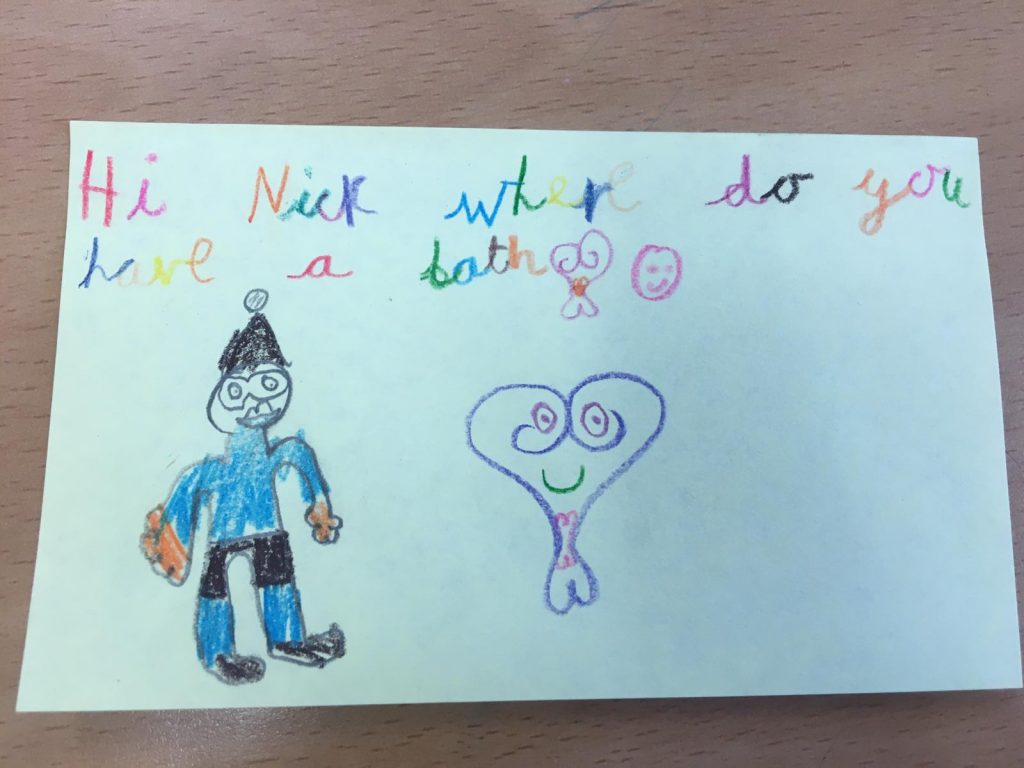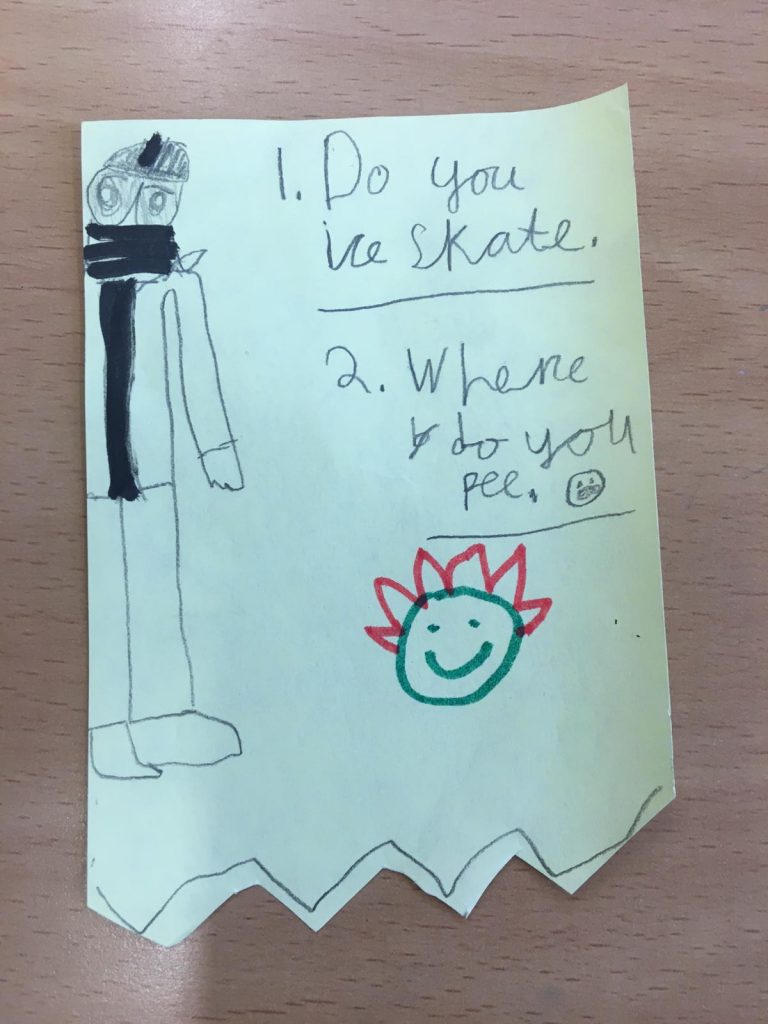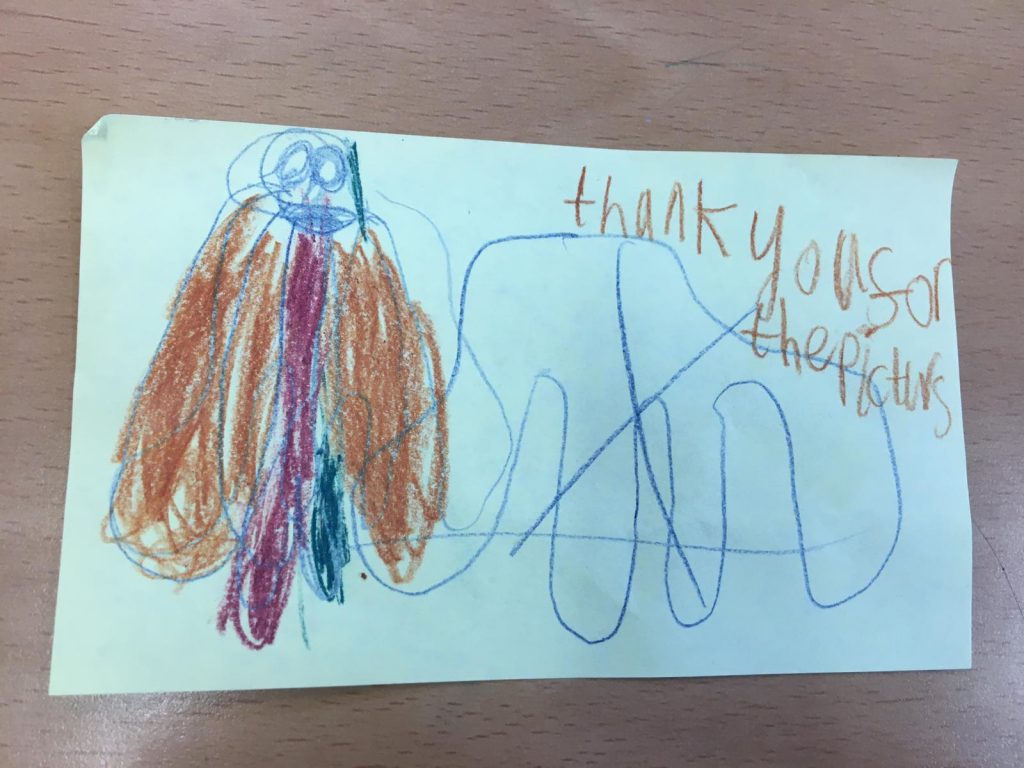Dr. Nick Smith is the ESA-sponsored medical doctor spending 12 months at Concordia research station in Antarctica for the 2020-21 season. He facilitates a number of experiments on the effects of isolation, light deprivation, and extreme temperatures on the human body and mind.

I thought I’d write a little about a fairly new experience that working for ESA in Antarctica has brought me – outreach with schools and schoolchildren and promoting Medicine and the STEM subjects.
When I arrived in Antarctica I was briefed that there would be an outreach responsibility, such as this blog, in which I’m happy to engage. Some of you may have seen the odd photo of mine on ESA’s social media, or may even have read my previous blogs (quite useful before bed to help one sleep). It turns out that everyone here at the Station has an outreach responsibility, not just me, and by and large this takes the form of video conferences with schools, their students and teachers. We generally present the people who live here at Concordia and the station itself then answer any questions the pupils/students may have, focussing on life here, the science we perform and the technical aspects of keeping the station alive. These are usually in Italian and sometimes French, but because the ESA MD is recruited from any ESA member state there is no reliable way to include their home country every year.

After many, many video conferences in Italian and French, I decided that it would be nice to communicate with a school in my mother tongue and see if I can’t promote medicine and the STEM subjects to my home country. I don’t particularly enjoy talking about myself but I am aware that my career to date, particularly working here, is probably mildly interesting. To summarise it, my foray into STEM and Medicine started with a bit of a hiccup when I failed my A Levels. This, however, was my own fault and while this probably isn’t something one should aim for, hasn’t stopped me from going on to become a British Army aircraft technician fixing unmanned, rotary and fixed wing aircraft, followed by retraining for 6 years to become a Doctor and subsequently working on the front-line of a pandemic, until today where I live in a place not all that dissimilar to the Moon or Mars, performing research that will directly inform future space travel. I hoped to use my somewhat convoluted story to illustrate the potential that STEM and Medicine gives a person to serve humanity in such a special and fulfilling way; a way that can take a person to our collective physical, intellectual and emotional frontiers.

After organising a few video conferences with some teacher friends and family I wound up speaking with a range of ages from primary school (~5 years old) through to Sixth-Form (~17 years old). I explained the ESA sponsored projects that I implement here at Concordia and in particular why the station is considered analogous to long-distance spaceflight or a station on another planet. I explained why only science can take you to such incredible, remote and unique places such as Concordia and the path I had taken to wind up here. If I’m honest I was half-expecting it to be a one-way conversation and a little uninteresting, particularly for the UK end, but I must admit that despite historically not being overly endeared to the younger population, the experience has been one of the most heartening and rewarding of my life to date. So much so that engaging with schools in this way will lodge itself firmly in my heart next to the only other two comparable experiences I’ve had; receiving an anonymous Christmas present while serving in Afghanistan with a letter headed “Dear Mr Soldier” and the smile on a very little, very ginger four-year-old girl’s face after reassuring her that her poorly mother will be ok. The whole thing was as far from a one-way conversation as could be; I have received many kind words from all ages as well as some delightful pictures. I’ve been invited to a myriad of places on my return and even to the cinema if I feel lonely. Teachers have come in on their days off, children have sung songs and one kid even said they aspire to be like me (I’m sure their judgement will improve in time).

I think some of my favourites are:
“Can you go on a aeroplane and put your hand in the Northern lights?”
“Are the penguins happy?”
“…how is the food digesting?”
“Do you Ice Skate?”
While I single these few out, all of the questions have been so very thoughtful and very imaginative.
So to Old Sodbury School, to Hayesfield Girls’ School and to King Solomon Academy, I would like to say thank you for your insightful questions, your support and your wonderful drawings and singing; you have warmed my heart and given me something I will treasure. I was expecting to explain a little about science, medicine and space and be done with it, but have received much more than I have given and have been overwhelmed with kindness and generosity. I am very grateful and hope that I’ve given STEM and Medicine a fair shot in your eyes, and made them seem like the fascinating, challenging and exciting subjects that they are. More importantly, I hope I have made them seem an attainable goal for absolutely everyone.

Thank you for reading perhaps one of my unashamedly cheesier blogs. This has been a deeply humbling experience and one I’m quite sure I will carry in my memory for the rest of my life. I feel indebted to everyone with whom I’ve spoken and can only hope that it has been as worthwhile for them, as it has been rewarding for me. I need to go now as my eyes are sweating – rest assured I’ll try to gush a little less in the future.
Cheers
Nick




Discussion: no comments